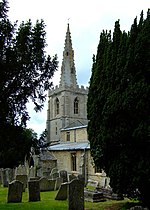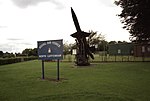Morcott Brook
Rivers of Rutland

The Morcott Brook, also known locally as "The Foss", is a small watercourse in Rutland in the East Midlands of England. It is a tributary of the River Chater and part of the River Welland catchment.
Excerpt from the Wikipedia article Morcott Brook (License: CC BY-SA 3.0, Authors, Images).Morcott Brook
Station Road,
Geographical coordinates (GPS) Address Nearby Places Show on map
Geographical coordinates (GPS)
| Latitude | Longitude |
|---|---|
| N 52.613292 ° | E -0.609722 ° |
Address
Station Road
LE15 8LF , North Luffenham
England, United Kingdom
Open on Google Maps









